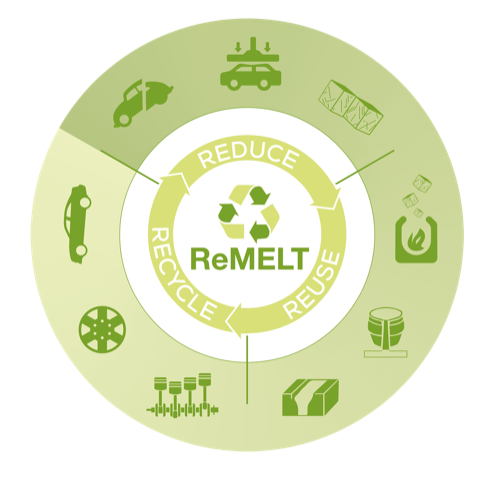Metalcasting
Metalcasting Foundries and circular economy
Foundries and circular economy
Foundries represent an important example of circular economy, thanks to the very nature of their production process, which has always put into practice an advanced mechanism of circularity: foundries and their technology, in fact, make it possible to recycle and reuse a large part of metal materials that have reached the "end of their life" to make new products.

Production waste is also reused in the process: 95% of the waste earth produced in the foundry is reused as raw material, replacing sand and earth from mining activities. Finally, 95% of the water used for cooling the furnaces is recovered and reused. A perfectly circular system, which makes foundries "recycle" by definition.
As regards the environmental impact of production, in 2015 the sample of companies surveyed in the first Sustainability Report of the sector allocated 28.5% of total investments to the environment. This figure is much higher than the average for manufacturing as a whole (2%) and has made it possible to drastically reduce dust emissions into the atmosphere (-65% since 2003) and the production of waste per tonne of castings produced (-26.6% from 2000 to 2015).
To continue this trend, Italian foundries through Assofond have joined - the only ones in Europe - the Effige project, financed by the European Union, which aims to test the PEF (Product Environmental Footprint) method, a system for calculating the environmental footprint of products throughout their entire life cycle in order to identify the most impacting phases of the production process and to identify and introduce solutions capable of reducing its incidence.
